Halva, Iranian Sweet
Halva (also spelled as Halwa, Halvah, etc.) a traditional treat, which is widely consuming over a large territory. Many sources claim that it originated in the Middle East & then later spread out to the Balkan peninsula, North Africa & even India. Nowadays, this delicious dessert is much appreciated in almost half of Europe, Poland, Lithuania, Latvia, Ukraine, and a large part of Russia to the Balkan states). Nevertheless, you can still find the largest variety of Halva in the Middle East – and of course, in Iran. It is worth mentioning that due to its great beneficial properties, it is more & more on-demand in other countries, particularly the UK & the US.
The History of Halwa & How It Is Made
In ancient times, this tasty treat was made from dates & milk or from sesame seeds & honey. As time passed, more variations of it were invented in many places around the world. more ingredients were tried and ultimately. more complex methods of production were utilized. Nowadays, you can find many rather similar or totally diverse types of Halva. (which also goes by the names & pronunciations Helva, Halawa, Chalva, Halwa, Halvah, Chałwa, Alva, Haleweh, Halava, Helava, Halua, Aluva, etc.).
But on the whole, there are two main types of Halva: 1- Flour based & 2- Nut based. The most common type of this sweet to Europeans is the latter one, which contains crushed sesame or sunflower seeds, sugar syrup & added flavors. Commonly, extra ingredients such as nuts, cocoa, dried fruits, or even bits of chocolate are added to it. You must bear in mind that Halva is quite varied in each individual country. Therefore, there is so much to explore & discover with regard to this tasty food.
One may also go as far as calling it the most ancient food supplement in the world due to the fact that it contains a lot of essential minerals, fatty acids, dietary fiber, proteins, amino-acids, and other useful & beneficial compounds. But please be sure to indulge & consume this dessert in a moderate amount because of its high sugar content. that if you use it in excess, may lead to many health problems. Consuming up to 30 grams of halva should be enough to satisfy your sweet tooth.
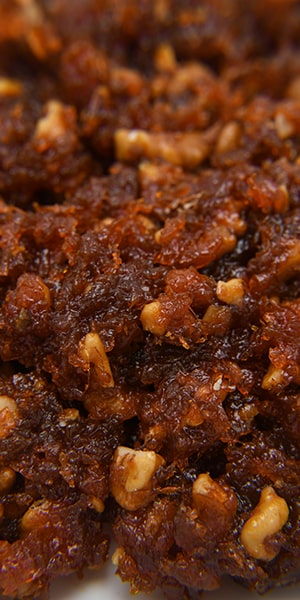
Persian Halva
This Persian pastry is a sweet dense paste that is made of flour & butter. and often mix with a syrup of sugar, Saffron, Rose Water & cardamom that gives it a pleasant taste and aroma. Halva is originally known as an Arabic dessert that literally means “sweet”. but it has found its way into many other Asian and North African countries & cultures. and served differently in each individual region. In Iran, it is usually serving at funerals or during the month of Ramadan (fasting). Iranians usually garnish it with shredded coconut pieces or slivered almonds shreds.
Halwa in the city of Urmia, Iran
Each & every city that you may travel has its own unique souvenirs to purchase and take back to your friends, relatives, and loved ones. What better souvenir than the one you can eat and thus, share the magnificent taste of the land’s traditional cooking. One of the best souvenirs that you can purchase from Urmia during your travels around Iran is Halwa. You can find a variety of delicious tasking and attractive looking types of this treat in Urmia. but one of the most well-known types is Halva-ye Nesar. This fabulous looking type is commonly decorating with pistachio pieces or almond slices. It is producing in different shapes including rhombus, circular or rectangular shapes. The main ingredients of this type include ground Saffron, Rose Water, sugar powder, flour, butter, water, shredded almonds, or pistachios slices.
You can ask the local salespeople or do a little internet search. this will help you with the added unique ingredients of each different type of Halwa. then pick out the one that best fits your taste, diet, or physical needs. As mentioned before, you may indeed want to consider this dessert as a natural food supplement and thus, be picky about what main ingredients it contains.
Halva Types
Ordinary Halwa (Wheat flour)
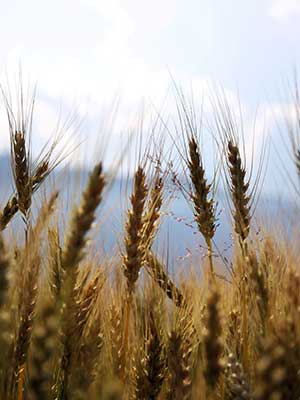
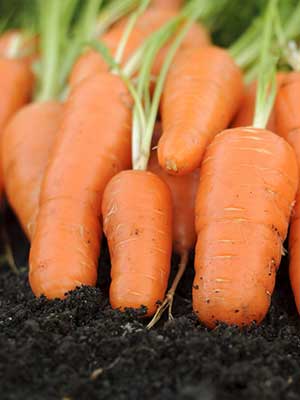
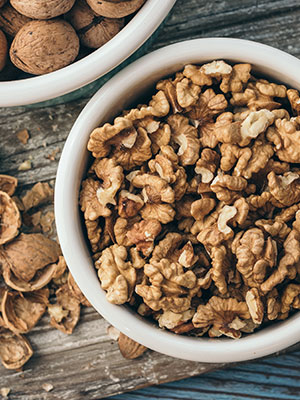
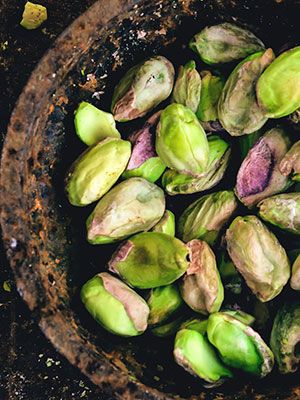
Storing Halva
Many types of this food can be stored outside of a refrigerator and in cool & dry conditions. (lower than 20 degrees Celsius.) but we recommend that you keep your stock of Halva refrigerated. in order to maintain its freshness & quality for an extended period of time.
